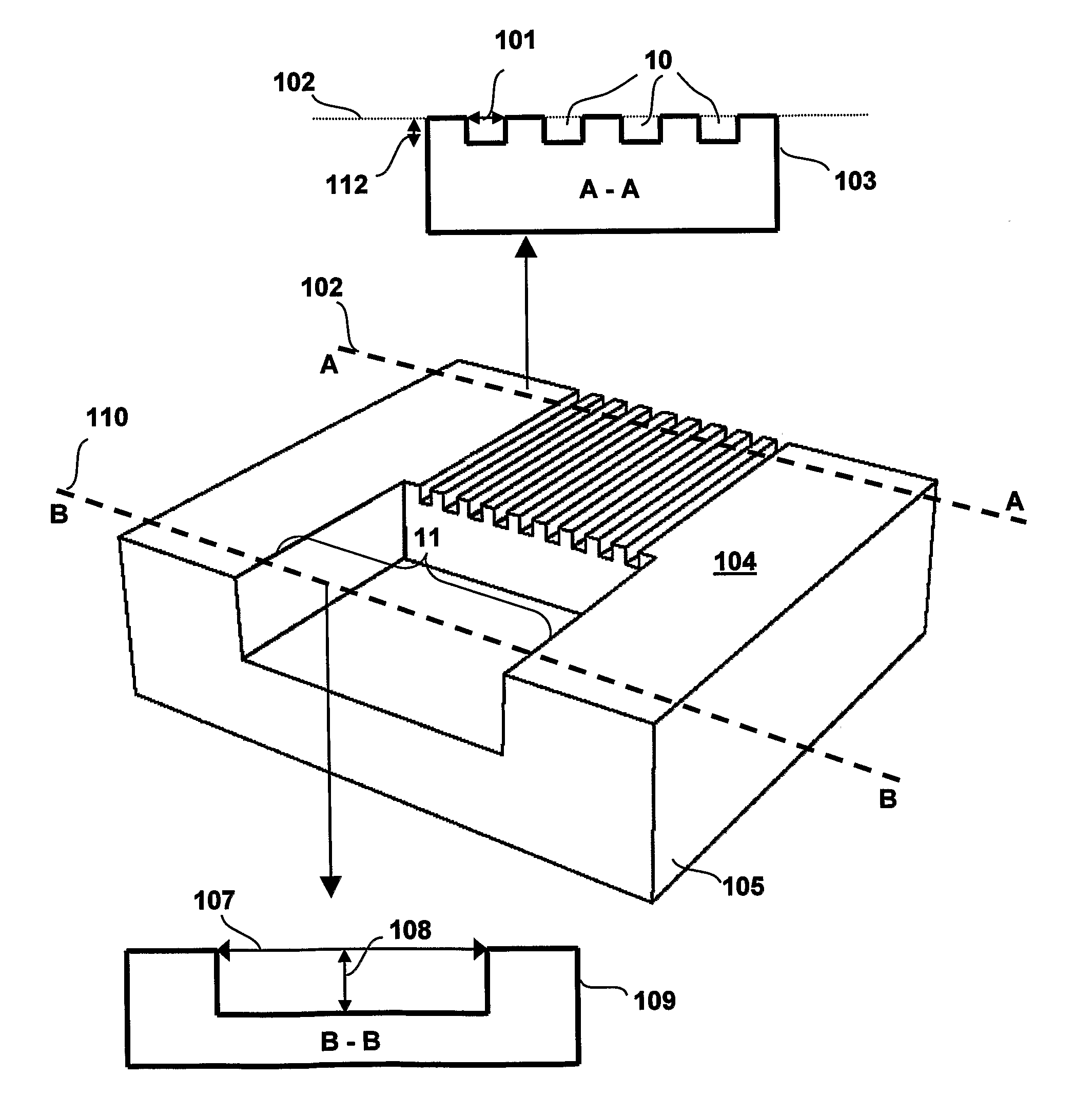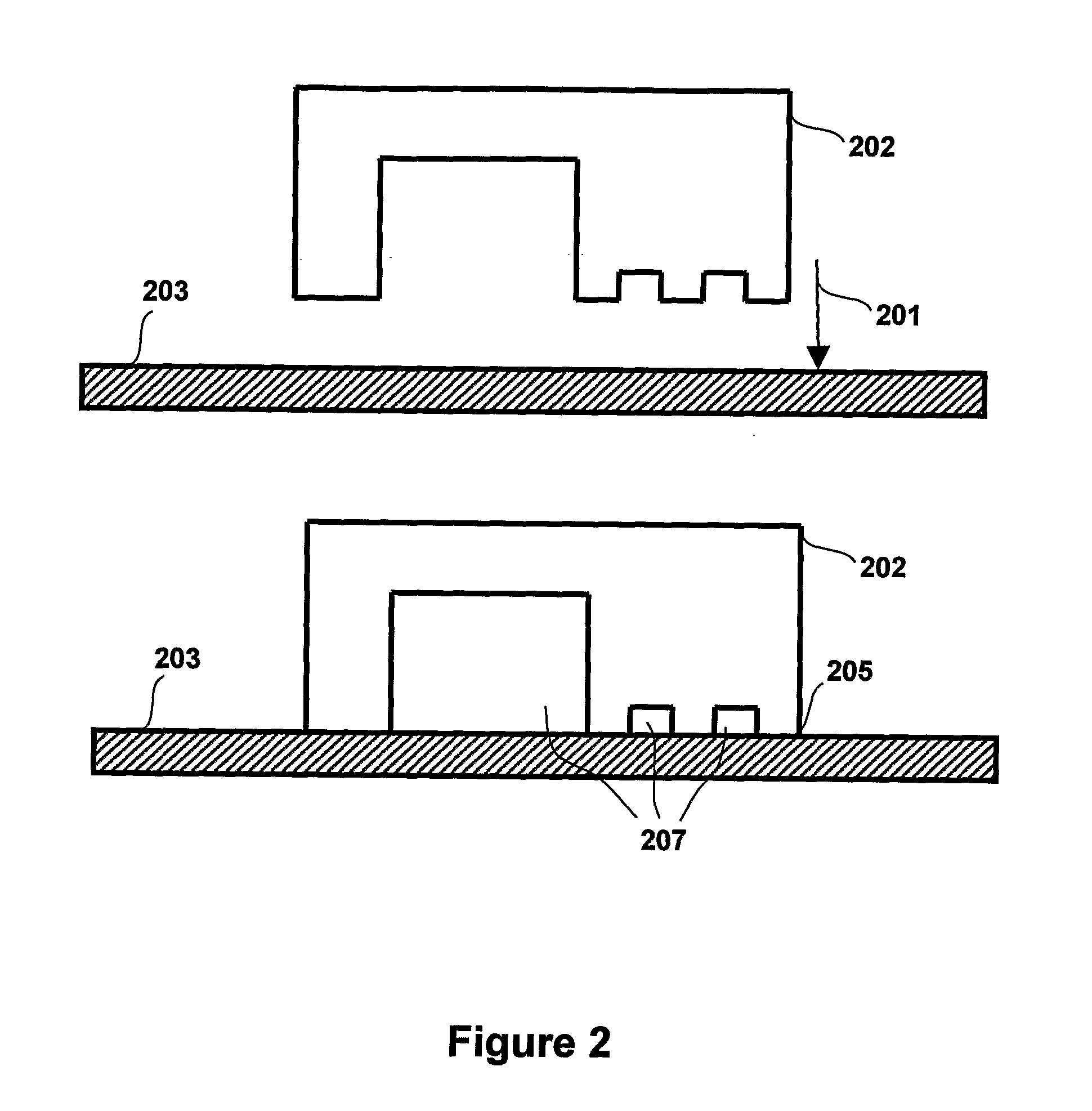Micro and NANO structures in an elastomeric material
a technology of elastomeric materials and nano-structures, applied in vacuum evaporation coatings, sputtering coatings, photographic processes, etc., can solve the problems of limited use of sl patterning techniques and cannot be patterned using conventional lithographic methods, and achieves high time consumption, large cost, and easy to use
- Summary
- Abstract
- Description
- Claims
- Application Information
AI Technical Summary
Benefits of technology
Problems solved by technology
Method used
Image
Examples
example 1
Molding of Template
[0071]Sylgard 184 (Dow Corning, UK), a two component silicone rubber (poly(dimethylsiloxane), PDMS), is used to prepare elastomeric device from the micro-nano SU-8 template, that is depicted in FIG. 3. and FIG. 5.
[0072]The prepolymer and the curing agent are mixed according to the instructions provided by the manufacturer. This is then poured on the SU-8 template and curing is accomplished by heating up to 130° C. for at least 20 min, but lower temperatures and longer incubation times can also be used depending requirements of stamp softness. Other stamp materials can also be used in the patterning step. The stamp is removed from the template after curing, and an inverted relief structure of the template is created in the elastomeric device.
[0073]FIG. 1 illustrates schematically an elastomer device that is molded from the SU-8 template.
example 2
One Step Contact Printing
[0074]Using of elastomeric device for one step contact printing of nano structures that are separated by micrometers. This would not be possible without using the present invention since the micro space between the nano structures would sag.
example 3
Dye Lasers
[0075]Formation of channel structures for micro and nano fluidics, in which liquids that carry luminescent molecules and polymers, are distributed through the channels under steady flow conditions. Such structures may include micro patterned dye lasers, in which the dye solution is distributed into a micro patterned optical cavity, and constantly replenished with fresh solution as the dye is consumed under operation. Distributed Bragg reflectors would be implemented in the same mask, through nanostructures, which could operate on the reflection at an air / template or solution / template interface. Periodic submicron structures could also be used for in coupling and out coupling of light from an optical waveguide defined with the help of liquid in the channel.
PUM
| Property | Measurement | Unit |
|---|---|---|
| size | aaaaa | aaaaa |
| size | aaaaa | aaaaa |
| size | aaaaa | aaaaa |
Abstract
Description
Claims
Application Information
 Login to View More
Login to View More - R&D
- Intellectual Property
- Life Sciences
- Materials
- Tech Scout
- Unparalleled Data Quality
- Higher Quality Content
- 60% Fewer Hallucinations
Browse by: Latest US Patents, China's latest patents, Technical Efficacy Thesaurus, Application Domain, Technology Topic, Popular Technical Reports.
© 2025 PatSnap. All rights reserved.Legal|Privacy policy|Modern Slavery Act Transparency Statement|Sitemap|About US| Contact US: help@patsnap.com



